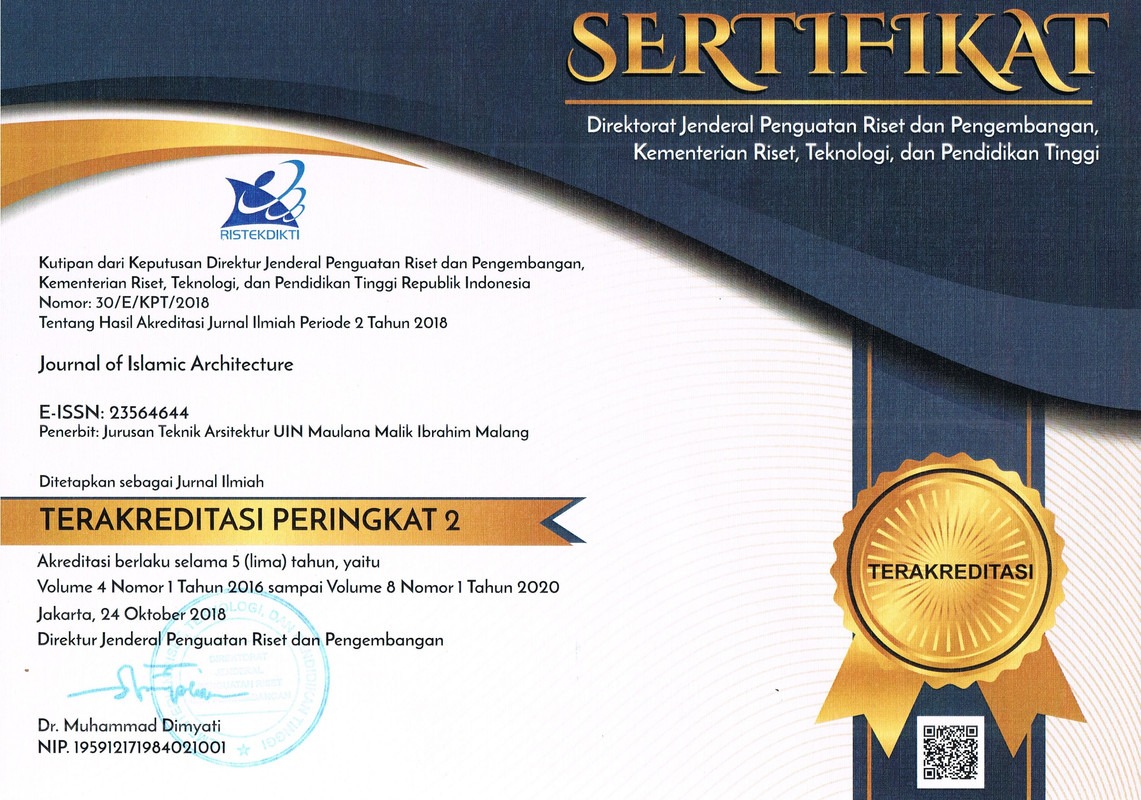A DESIGNER IN THE INTERSECTION OF ISLAMIC-OTTOMAN ARCHITECTURE: THE ARCHITECTURAL CONCEPT OF TURGUT CANSEVER (1920-2009)
Abstract
Architects in the history of architecture try to be understood by their ideas that their designs need to be present on earth. Turgut Cansever (1920-2009) is an important opponent architect who was prized by Aga Khan Awards for architecture three times in his professional life and established his architectural understanding of the architecture of Ottoman and Islamic culture. This study aims to describe the life and work of the architect and his opinion about Islamic-Ottoman Architecture. Setting his architectural conception on a broader belief, Cansever strengthens his apprehension of architecture with his practice and literature studies. This unique approach in his works is shaped by a point of view that criticizes modernity but aims to validate it by reinterpreting in line with Islamic architecture. The references in the background of the structures of Cansever is thought to be too complex to read at a time. The understanding of Cansever's original designer perspective will be possible through the discussion of his synthesis resulted from the thoughts of Islamic architecture, Ottoman Architecture and modern architecture, and their reflections on his structures.
Keywords
Full Text:
PDFReferences
F. Sönmez & S. Arslan, “Seyahat Aracılığıyla Dünyayı Görme, Seziş Ve Yorumlama: Turgut Cansever Üzerine Bir Aktif Okuma/Düşünme”,
Ege Mimarlık Dergisi, no:92,pp.38-41, 2016
U. Tanyeli, “Çağdaş Mimarlıkta İslami İçerik Sorunu ve Cansever”, Çağdaş Türkiye Mimarları Dizisi 1, İstanbul, Boyut Press, pp. 7-21, 2001
B. Yıldırım, “Mimarlıkta Modernite ve Süreklilik”, M.Sc. thesis, İstanbul, 2007
Ibit, Çağdaş Türkiye Mimarları Dizisi 1, Çağdaş Türkiye Mimarları Dizisi 1. İstanbul: Boyut Press, pp. 7-21, 2001
T. Cansever, Sonsuz Mekanın Peşinde, Selçuklu ve Osmanlı Sanatının Sütun Başlıkları. İstanbul: Klasik Press, 2010
E. B. Burkut, “Osmanlı/Türk Evi Mekan Kurgusunu Modern Konut Mimarisinde Okumak”, M.Sc. thesis, İstanbul, 2014
O.Öztepe, “İstanbul Topoğrafyasında Sessizce Yiten Bir Turgut Cansever Yapısı: Şişli Terakki Vakfı Anaokulu”, Yapı Dergisi, no:430, pp. 54- 58, 2007
T. Cansever, “Şehir, Kent ve Kültürü”, No:8, Cogito. İstanbul: Yapı Kredi Kültür Sanat Press, 1996
T. Cansever, Kubbeyi Yere Koymamak, İstanbul: Timaş Press, 2002
T. Cansever, İslamda Şehir ve Mimari, İstanbul: Timaş Press, 2013
H.İ. Düzenli, İdrak ve İnşa, Turgut Cansever Mimarlığının İki Düzlemi. İstanbul: Klasik Press, 2009
D. Hasol, 20. Yüzyıl Türkiye Mimarlığı. İstanbul: Yem Press, 2017
R. Holod and D. Rastorfer, Turkish Historical Society. In Architecture and Community. New York: Aperture, 1983.
A. KÖKSAL and G. Kalan, “Karatepe Saçakları ve Müelliflik Sorunu,” mimarizm, 2016. [Online]. Available: http://www.mimarizm.com/kose-yazilari/karatepe-sacaklari-ve-muelliflik- sorunu_126312. [Accessed: 10-Sep-2018].
L.Ö. Ersal, Mimari Mekanın Biçimlendirilmesi ve Anlam Boyutu: Ontolojik Yaklaşım, M.Sc. thesis, İstanbul, 2013
“Recipient of the Aga Khan Award for Architecture in 1980,” Archnet, 1980. [Online]. Available: https://archnet.org/sites/51. [Accessed: 10-Sep-2018].
“Recipient of the Aga Khan Award for Architecture in 1992.,” Archnet, 1992. [Online]. Available: https://archnet.org/sites/771.
N.Yılmaz, Osmanlı/TürkEvi Mekan Kurgusunu Modern Konut Mimarisinde Okumak, M.Sc. thesis, İstanbul, 2014
U. Demirgüç, Mimarlıkta Eleştirel Bölgeselcilik ve Turgut Cansever, M.Sc. thesis, İstanbul,2006
R. Naja, “AD Classics: Swiss Pavilion / Le Corbusier,” Archdaily, 2013. [Online]. Available: https://www.archdaily.com/358312/ad-classics-swiss-pavilion-le-corbusier. [Accessed: 10-Sep-2018].
D. Kuban, “An Ottoman Building Complex of the Sixteenth Century: The Sokollu Mosque and Its Dependencies in Istanbul,” JSTOR, vol. 7, pp. 19–39, 1968.
DOI: https://doi.org/10.18860/jia.v5i4.5346
Refbacks
- There are currently no refbacks.






